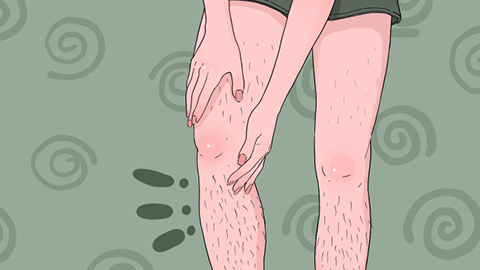How to Examine the Causes of Excessive Body Hair Growth
The cause of excessive body hair can generally be examined through methods such as observing hair distribution characteristics, understanding family medical history, monitoring accompanying symptoms, conducting six-item sex hormone tests, and adrenal function tests. If physical discomfort occurs, it is recommended to seek medical attention promptly and follow medical advice for treatment.

1. Observe hair distribution characteristics: Carefully examine areas with thick hair growth. If the excessive hair growth is concentrated on androgen-dependent areas such as the face, jawline, chest, and abdomen, and the hair is coarse, thick, and distributed in a male pattern, it may be related to abnormal androgen levels. If overall body hair is generally increased and evenly distributed, it may be due to other endocrine factors or systemic diseases. The cause can be initially determined by analyzing the distribution pattern.
2. Understand family medical history: Investigate whether there are similar cases of excessive hair growth in the family. If other family members also have hirsutism, it may indicate hereditary hirsutism. Genetic factors may affect hormone metabolism in the body or the sensitivity of hair follicles to hormones, leading to abnormal hair growth.
3. Observe accompanying symptoms: Record daily habits such as diet, sleep patterns, and stress levels, and pay attention to any accompanying symptoms such as menstrual irregularities, acne, or obesity. These symptoms are often associated with endocrine disorders and help in making a comprehensive diagnosis.
4. Six-item sex hormone test: Visit a hospital to undergo a six-item sex hormone test, which includes testosterone, estradiol, luteinizing hormone, follicle-stimulating hormone, prolactin, and progesterone. Elevated testosterone levels may be an important cause of excessive hair growth due to conditions like polycystic ovary syndrome (PCOS). Measuring hormone levels helps determine whether there is an endocrine imbalance.
5. Adrenal function test: A doctor may order adrenal function tests such as blood and urine cortisol levels and adrenocorticotropic hormone (ACTH) measurements. Adrenal diseases, such as congenital adrenal hyperplasia, can affect adrenal hormone secretion, leading to increased androgen levels and resulting in hirsutism. These tests can help identify whether there is adrenal dysfunction.
Excessive hair growth caused by gender differences is a normal physiological phenomenon and does not require special intervention. If women develop明显的男性特征, pathological causes should be considered.






